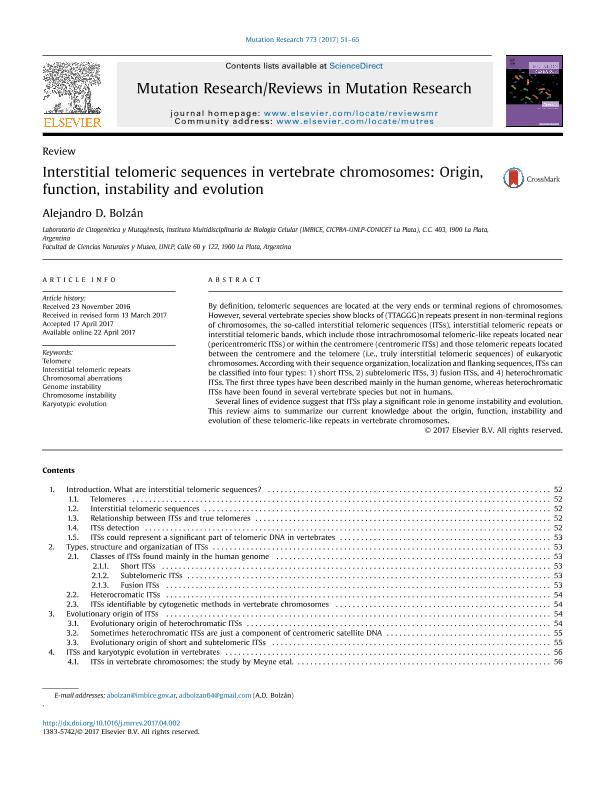Artículo
Interstitial telomeric sequences in vertebrate chromosomes: Origin, function, instability and evolution
Fecha de publicación:
07/2017
Editorial:
Elsevier Science
Revista:
Mutation Research. Reviews In Mutation Research
ISSN:
1383-5742
Idioma:
Inglés
Tipo de recurso:
Artículo publicado
Clasificación temática:
Resumen
By definition, telomeric sequences are located at the very ends or terminal regions of chromosomes. However, several vertebrate species show blocks of (TTAGGG)n repeats present in non-terminal regions of chromosomes, the so-called interstitial telomeric sequences (ITSs), interstitial telomeric repeats or interstitial telomeric bands, which include those intrachromosomal telomeric-like repeats located near (pericentromeric ITSs) or within the centromere (centromeric ITSs) and those telomeric repeats located between the centromere and the telomere (i.e., truly interstitial telomeric sequences) of eukaryotic chromosomes. According with their sequence organization, localization and flanking sequences, ITSs can be classified into four types: 1) short ITSs, 2) subtelomeric ITSs, 3) fusion ITSs, and 4) heterochromatic ITSs. The first three types have been described mainly in the human genome, whereas heterochromatic ITSs have been found in several vertebrate species but not in humans. Several lines of evidence suggest that ITSs play a significant role in genome instability and evolution. This review aims to summarize our current knowledge about the origin, function, instability and evolution of these telomeric-like repeats in vertebrate chromosomes.
Archivos asociados
Licencia
Identificadores
Colecciones
Articulos(IMBICE)
Articulos de INST.MULTIDISCIPL.DE BIOLOGIA CELULAR (I)
Articulos de INST.MULTIDISCIPL.DE BIOLOGIA CELULAR (I)
Citación
Bolzan, Alejandro Daniel; Interstitial telomeric sequences in vertebrate chromosomes: Origin, function, instability and evolution; Elsevier Science; Mutation Research. Reviews In Mutation Research; 773; 7-2017; 51-65
Compartir
Altmétricas




